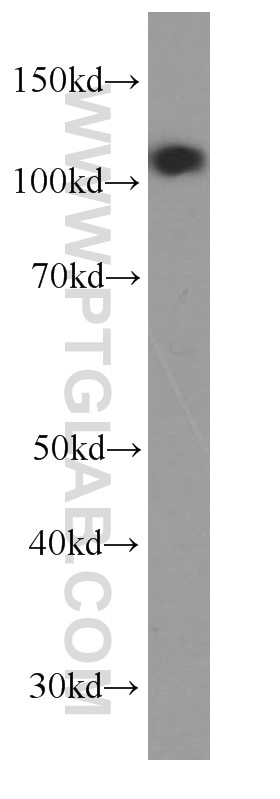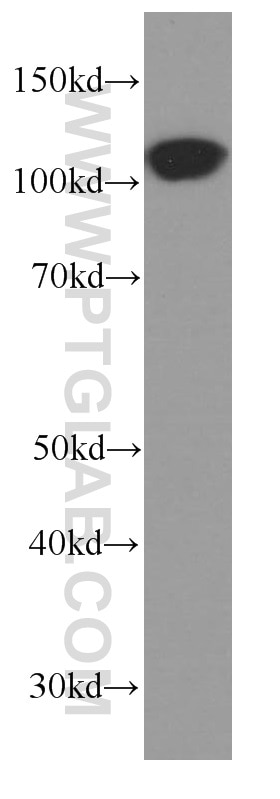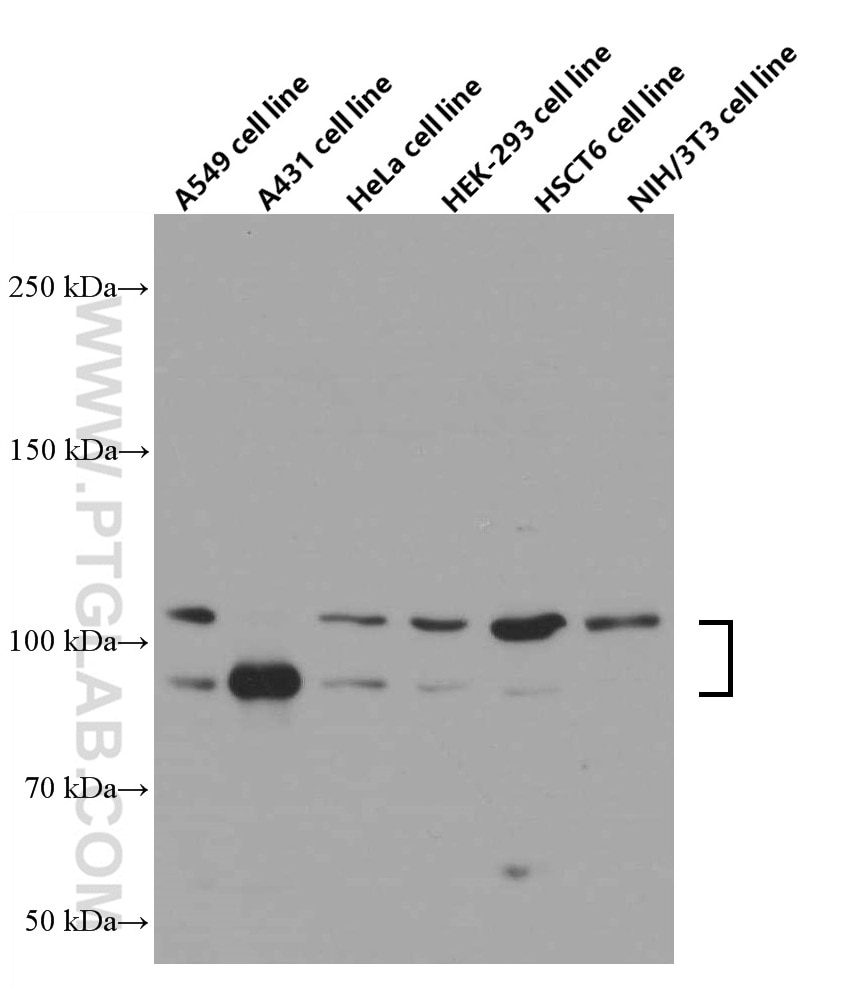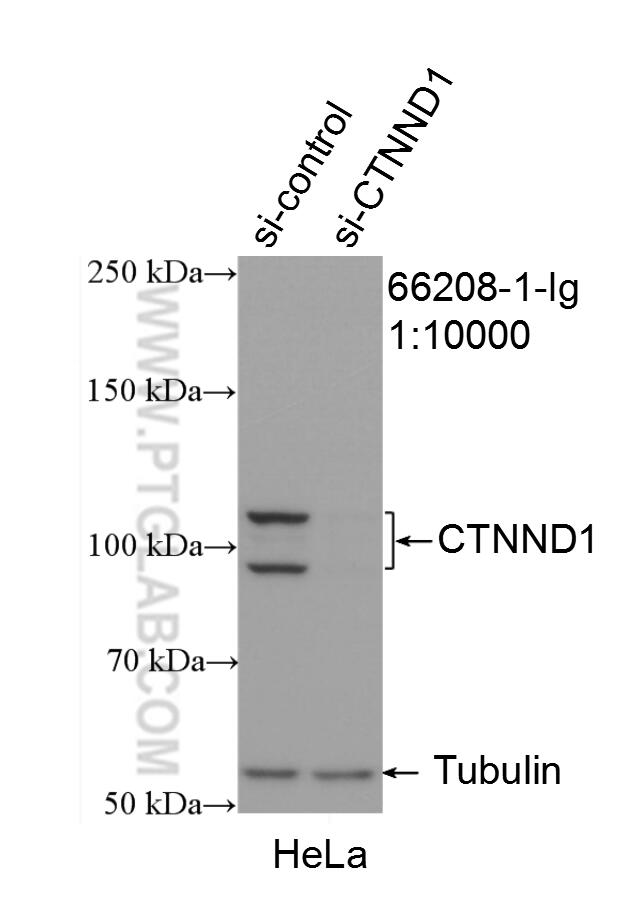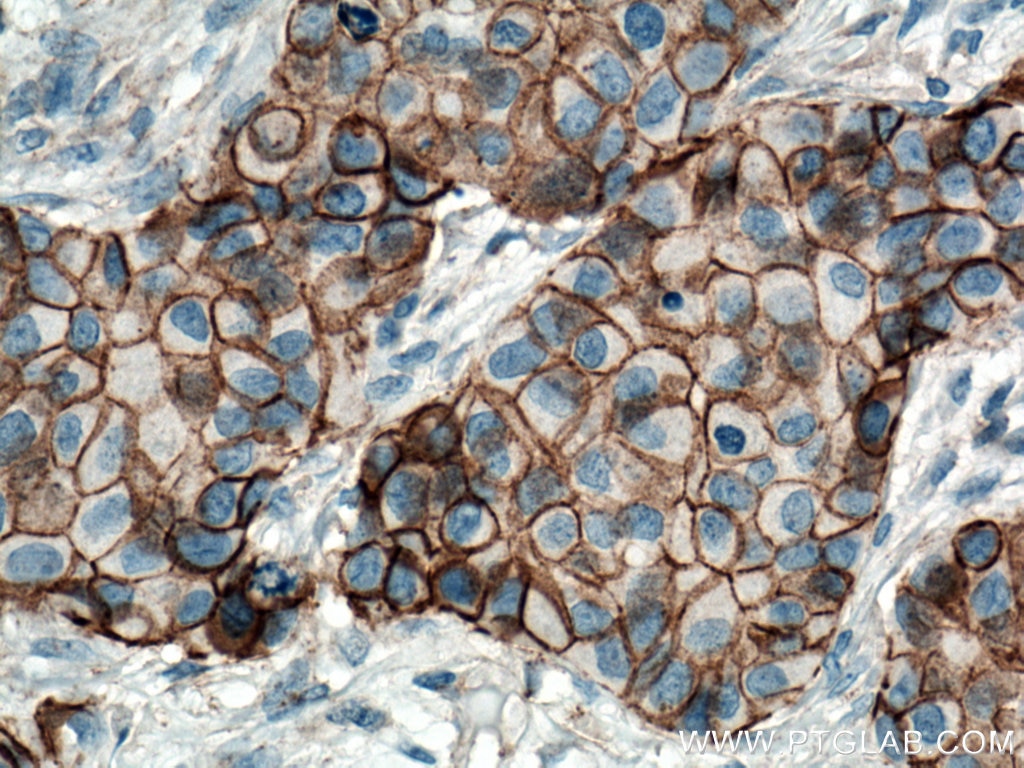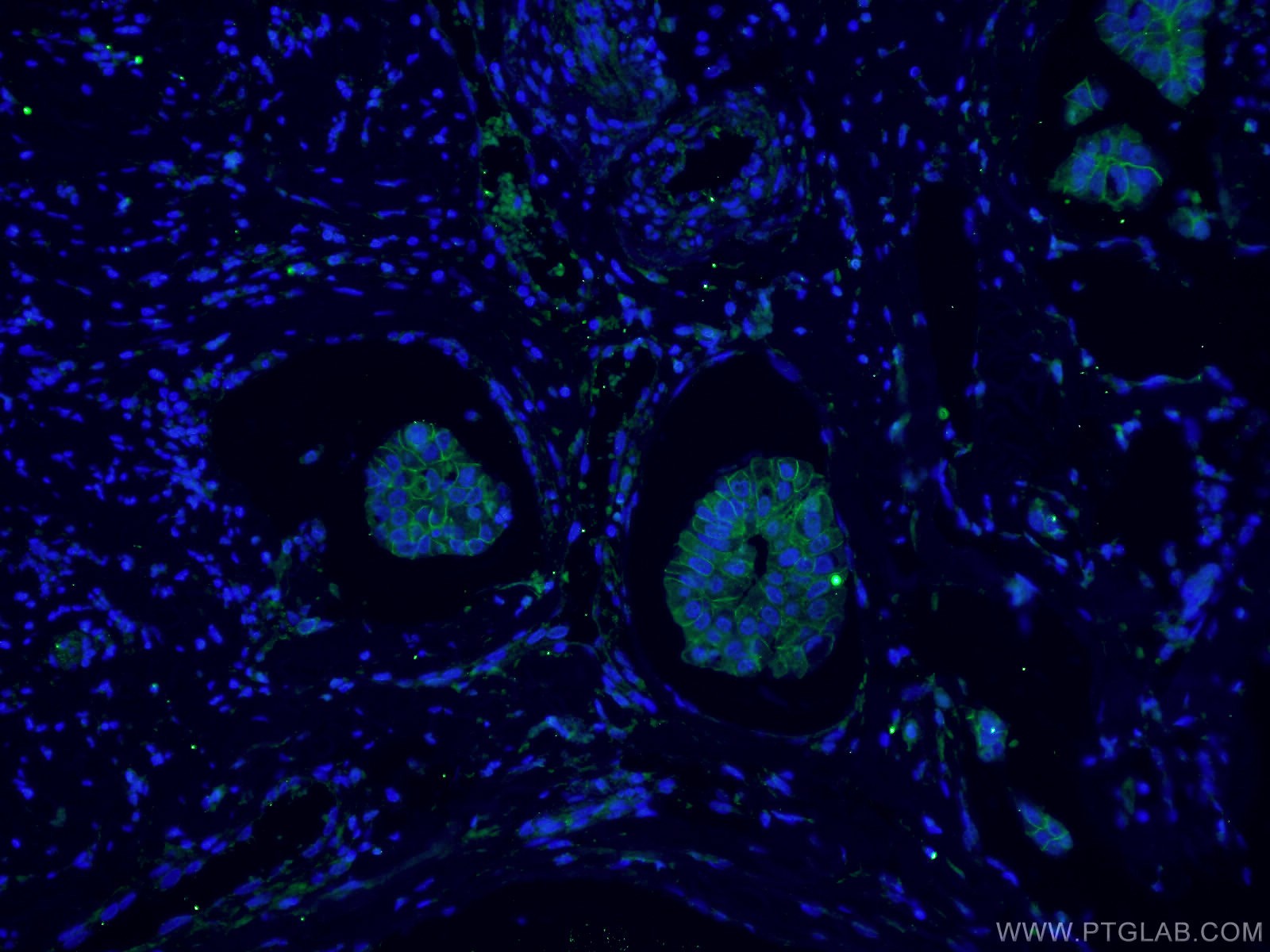Validation Data Gallery
Tested Applications
| Positive WB detected in | fetal human brain tissue, HeLa cells, HEK-293 cells, A549 cells, mouse brain tissue, A431 cells, HSC-T6 cells, NIH/3T3 cells |
| Positive IHC detected in | human breast cancer tissue, human colon cancer tissue, mouse colon tissue, rat colon tissue Note: suggested antigen retrieval with TE buffer pH 9.0; (*) Alternatively, antigen retrieval may be performed with citrate buffer pH 6.0 |
| Positive IF-Fro detected in | mouse breast cancer |
| Positive IF/ICC detected in | A431 cells, HeLa cells |
Recommended dilution
| Application | Dilution |
|---|---|
| Western Blot (WB) | WB : 1:500-1:2000 |
| Immunohistochemistry (IHC) | IHC : 1:250-1:1000 |
| Immunofluorescence (IF)-FRO | IF-FRO : 1:200-1:800 |
| Immunofluorescence (IF)/ICC | IF/ICC : 1:200-1:400 |
| It is recommended that this reagent should be titrated in each testing system to obtain optimal results. | |
| Sample-dependent, Check data in validation data gallery. | |
Published Applications
| WB | See 3 publications below |
| IF | See 3 publications below |
| IP | See 2 publications below |
Product Information
66208-1-Ig targets p120 Catenin in WB, IHC, IF/ICC, IF-Fro, IP, ELISA applications and shows reactivity with human, mouse, rat samples.
| Tested Reactivity | human, mouse, rat |
| Cited Reactivity | human, mouse, rat |
| Host / Isotype | Mouse / IgG2b |
| Class | Monoclonal |
| Type | Antibody |
| Immunogen | p120 Catenin fusion protein Ag2824 相同性解析による交差性が予測される生物種 |
| Full Name | catenin (cadherin-associated protein), delta 1 |
| Calculated molecular weight | 948 aa, 105 kDa |
| Observed molecular weight | 90-120 kDa |
| GenBank accession number | BC010501 |
| Gene Symbol | p120 Catenin |
| Gene ID (NCBI) | 1500 |
| RRID | AB_2881599 |
| Conjugate | Unconjugated |
| Form | Liquid |
| Purification Method | Protein A purification |
| UNIPROT ID | O60716 |
| Storage Buffer | PBS with 0.02% sodium azide and 50% glycerol , pH 7.3 |
| Storage Conditions | Store at -20°C. Stable for one year after shipment. Aliquoting is unnecessary for -20oC storage. |
Background Information
Catenins were discovered as proteins that are linked to the cytoplasmic domain of transmembrane cadherins (PMID: 9653641). p120 catenin, also called p120 ctn or catenin delta-1, regulates cell-cell adhesion through its interaction with the cytoplasmic tail of classical and type II cadherins. p120 catenin is a tyrosine kinase substrate implicated in cell transformation by SRC, as well as in ligand-induced receptor signaling through the EGF receptor, the PDGF receptor, and the CSF1 receptor. Different expression patterns of p120 catenin in lobular and ductal carcinomas of breast have been reported: membrane stain for ductal carcinoma and cytoplasmic stain for lobular carcinoma (PMID: 24966968). Different isoforms of p120 catenin are variably expressed in different tissues as a result of alternative splicing and the use of multiple translation initiation codons (PMID: 19150613).
Protocols
| Product Specific Protocols | |
|---|---|
| WB protocol for p120 Catenin antibody 66208-1-Ig | Download protocol |
| IHC protocol for p120 Catenin antibody 66208-1-Ig | Download protocol |
| IF protocol for p120 Catenin antibody 66208-1-Ig | Download protocol |
| Standard Protocols | |
|---|---|
| Click here to view our Standard Protocols |
Publications
| Species | Application | Title |
|---|---|---|
Mol Oncol Kaiso phosphorylation at threonine 606 leads to its accumulation in the cytoplasm, reducing its transcriptional repression of the tumour suppressor CDH1. | ||
Development Ontogenesis of the tear drainage system requires Prickle1-driven polarized basement membrane deposition. | ||
Proc Natl Acad Sci U S A SENCR stabilizes vascular endothelial cell adherens junctions through interaction with CKAP4. | ||
Biomed Pharmacother Inhibition of autophagy and RIP1/RIP3/MLKL-mediated necroptosis by edaravone attenuates blood spinal cord barrier disruption following spinal cord injury | ||
Clin Exp Pharmacol Physiol Colorectal cancer cells with stably expressed SIRT3 demonstrate proliferating retardation by Wnt/β-catenin cascade inactivation |
